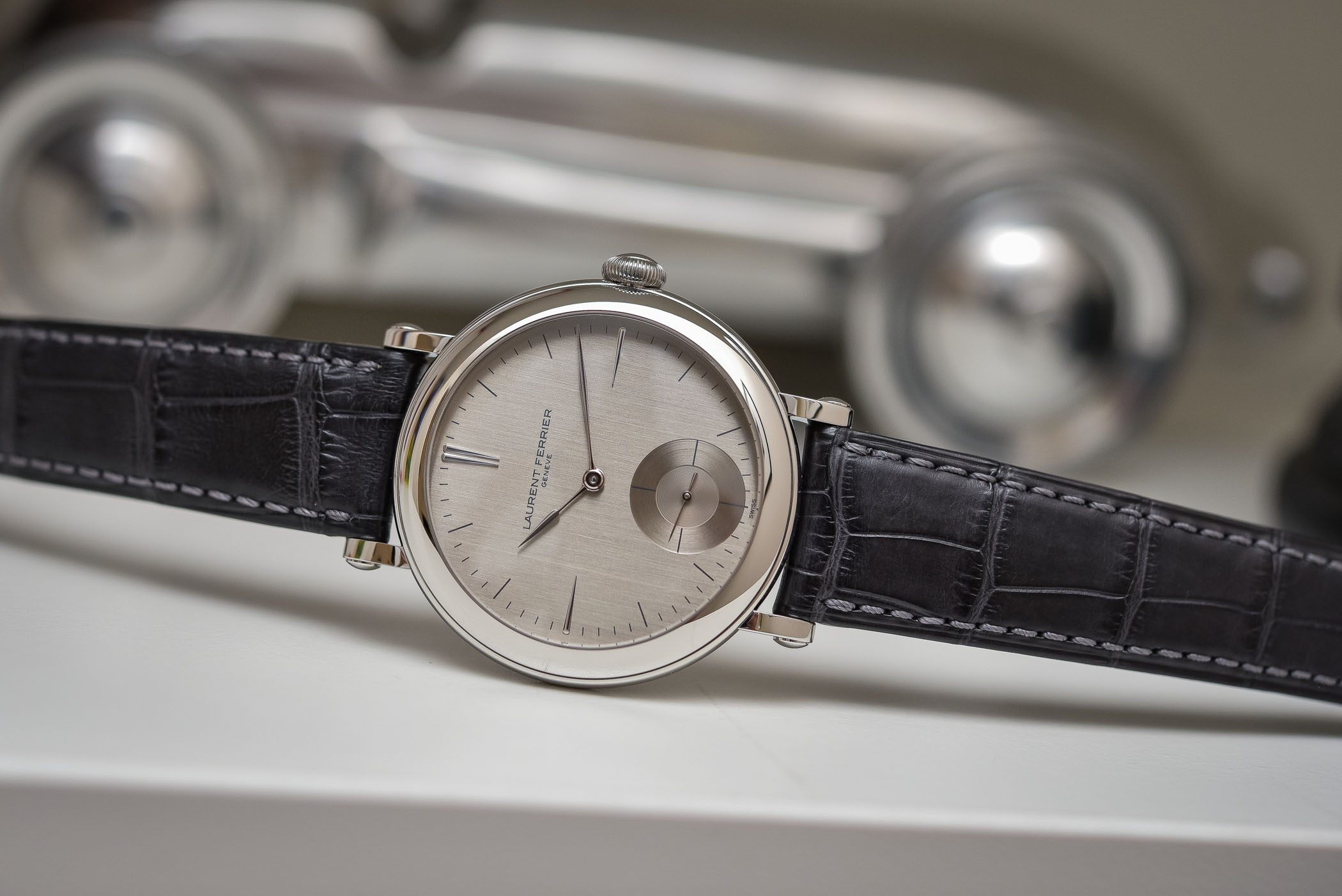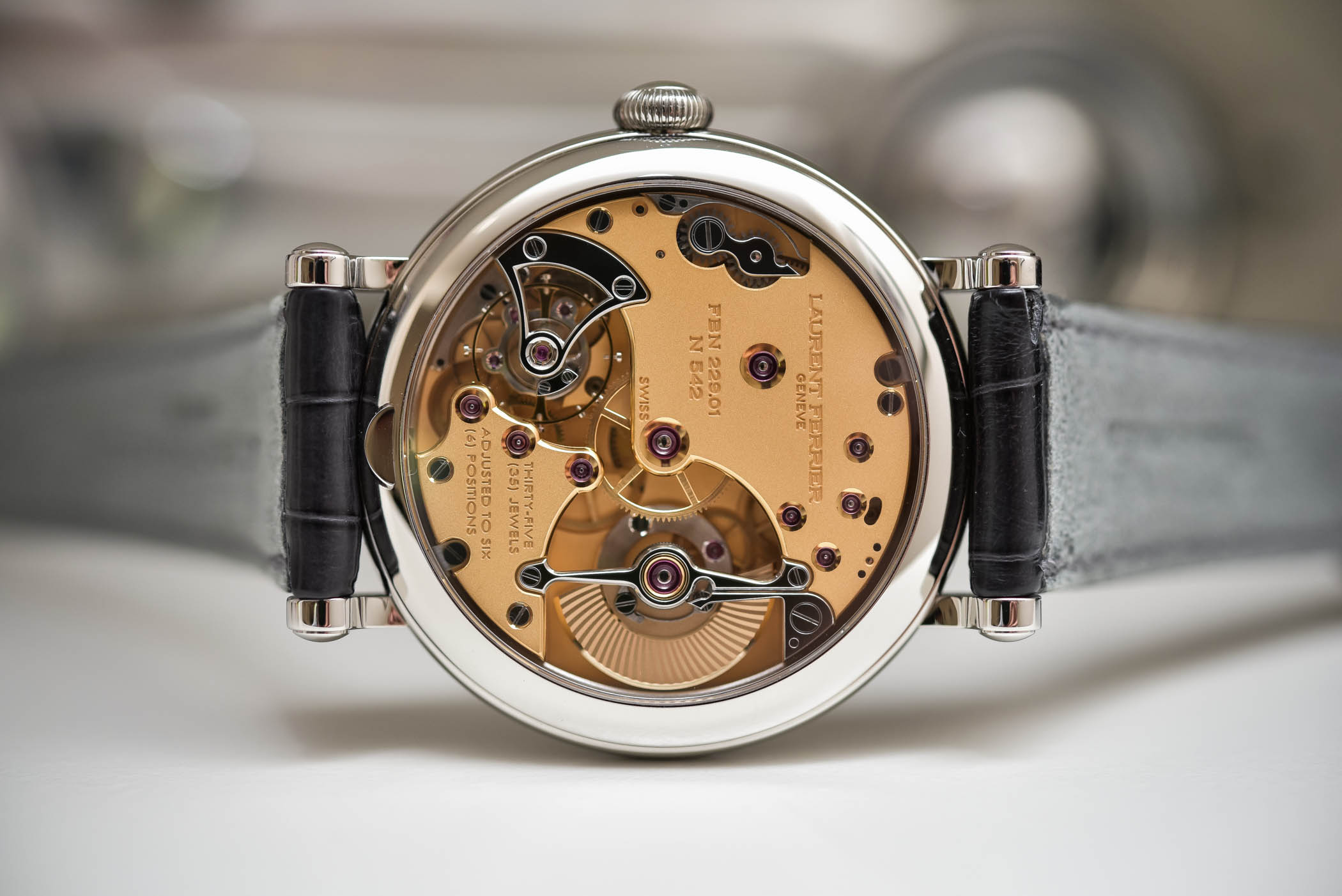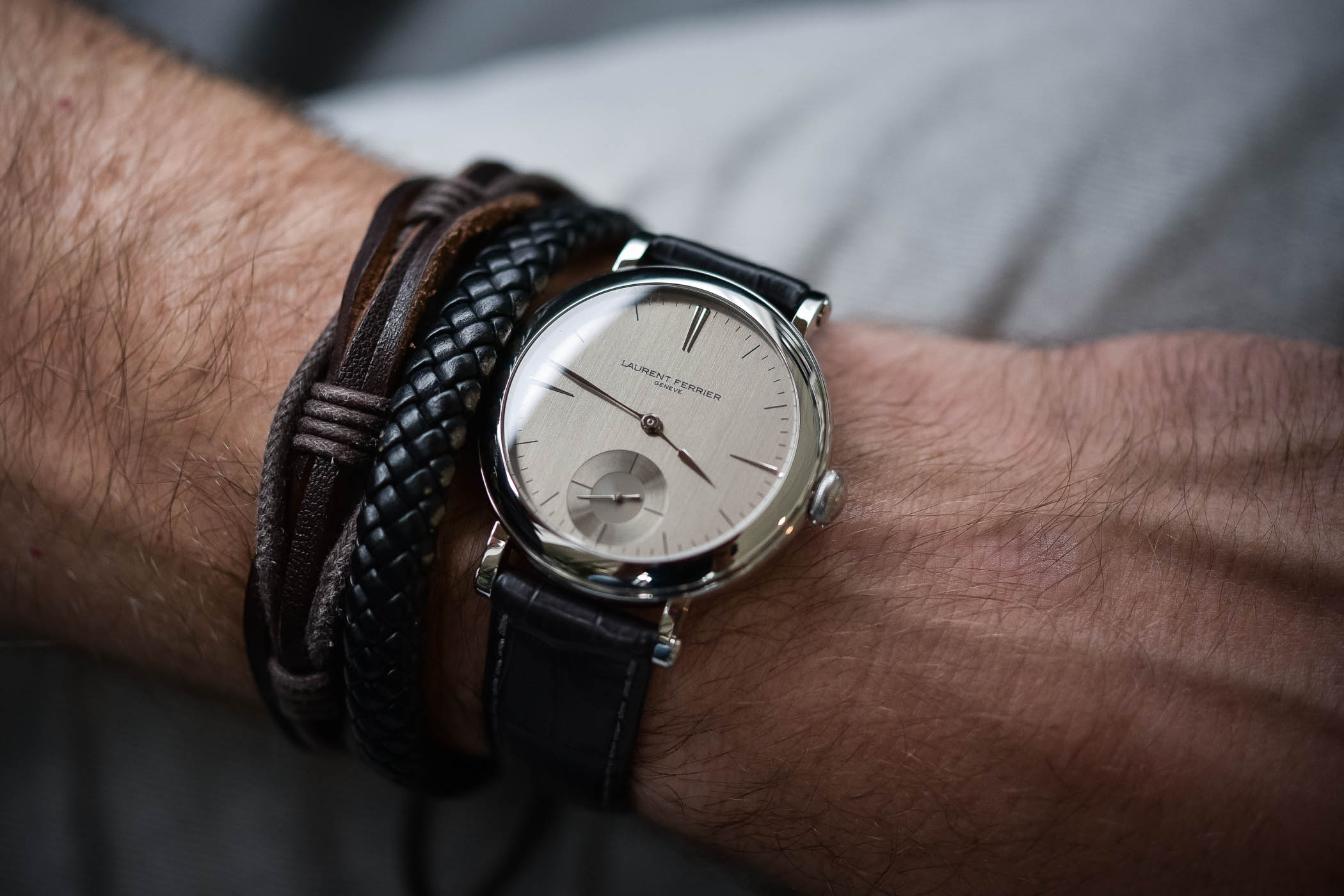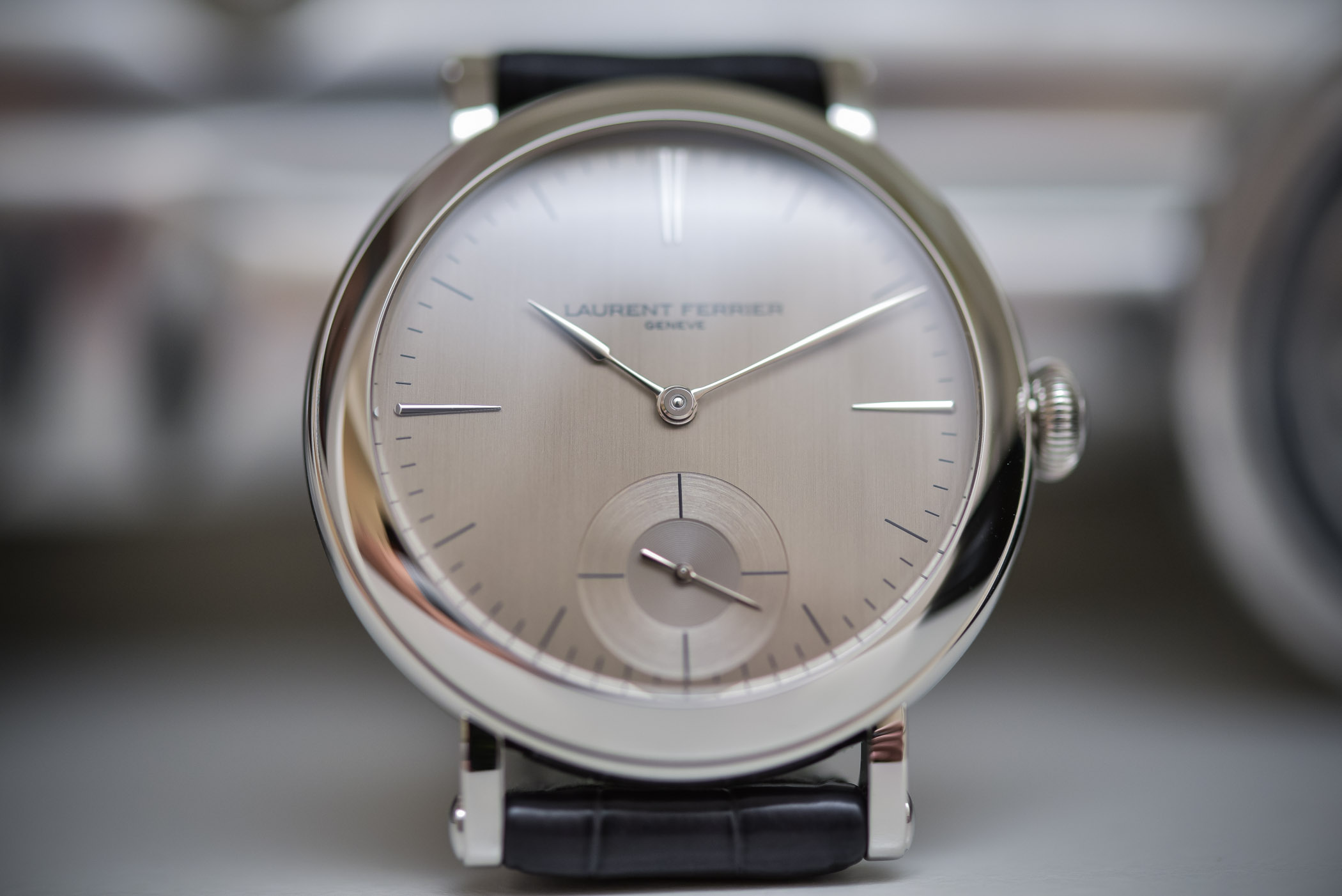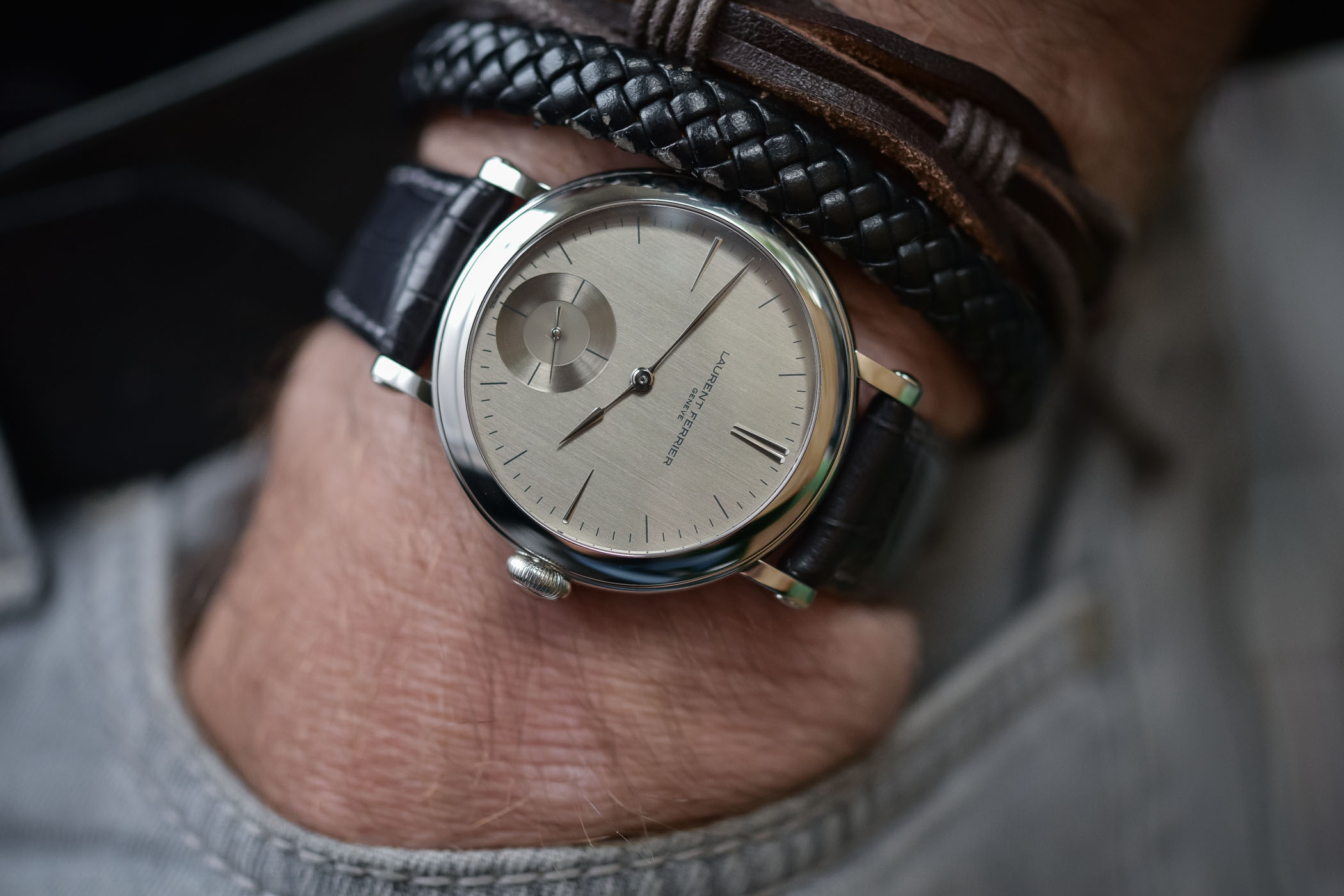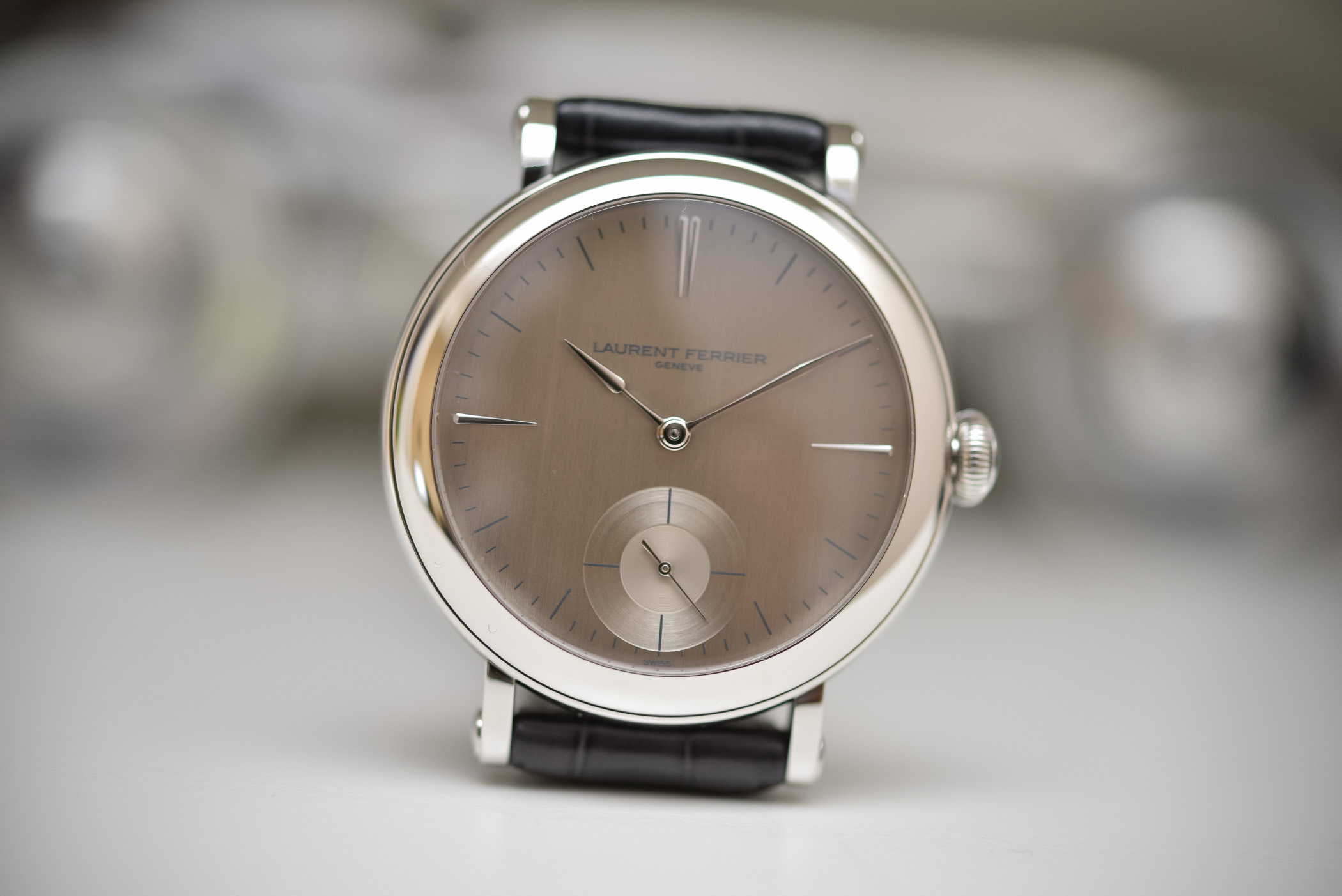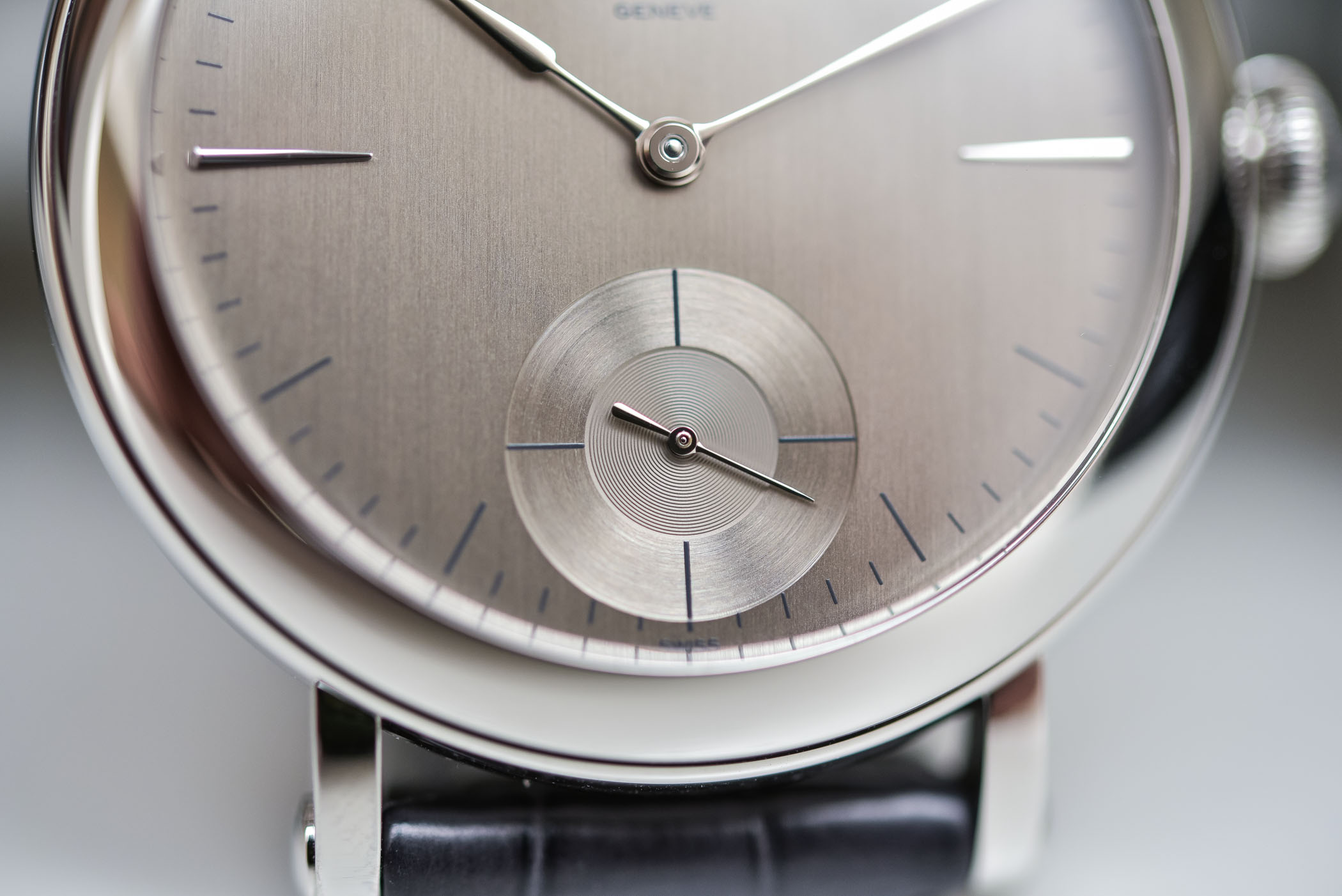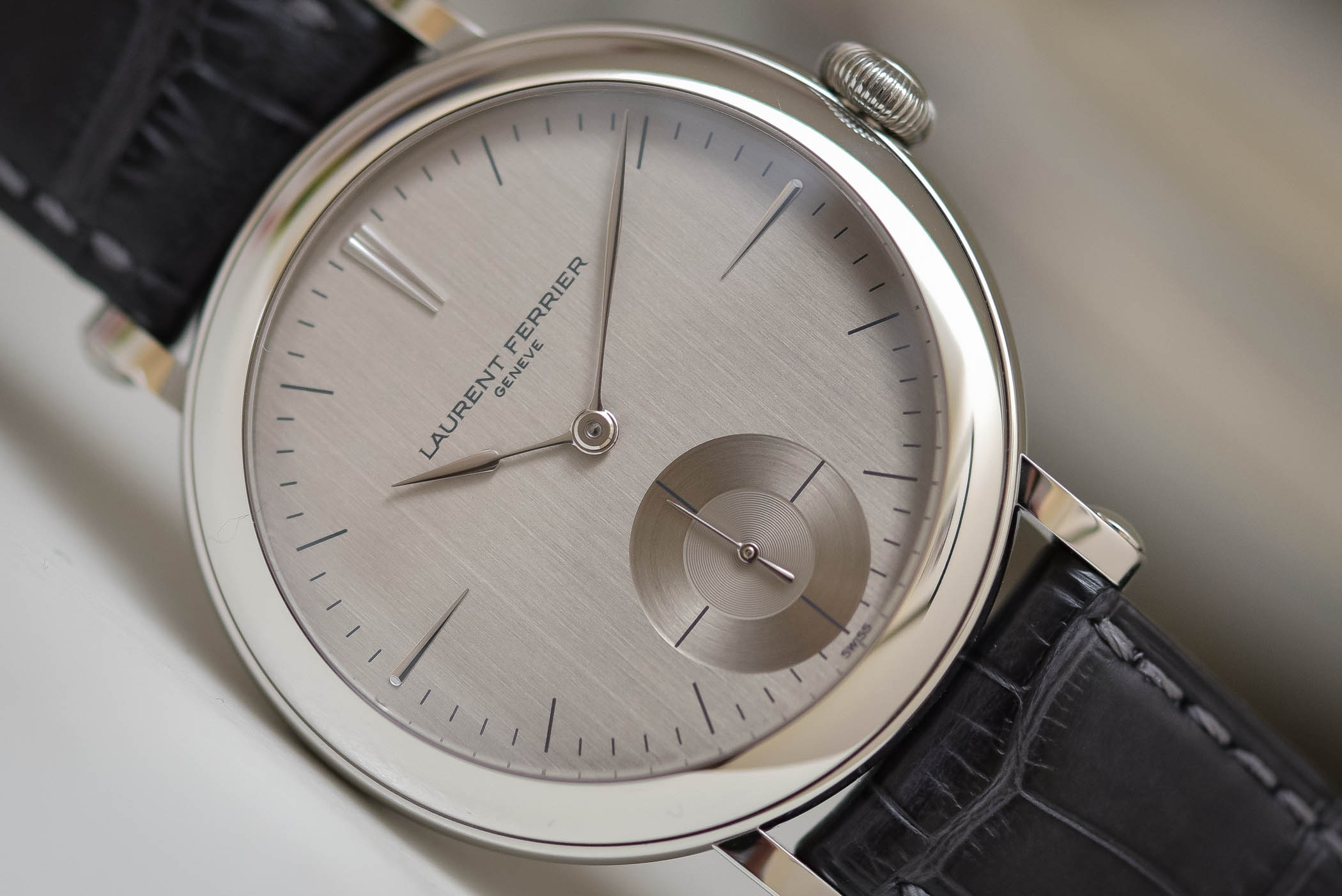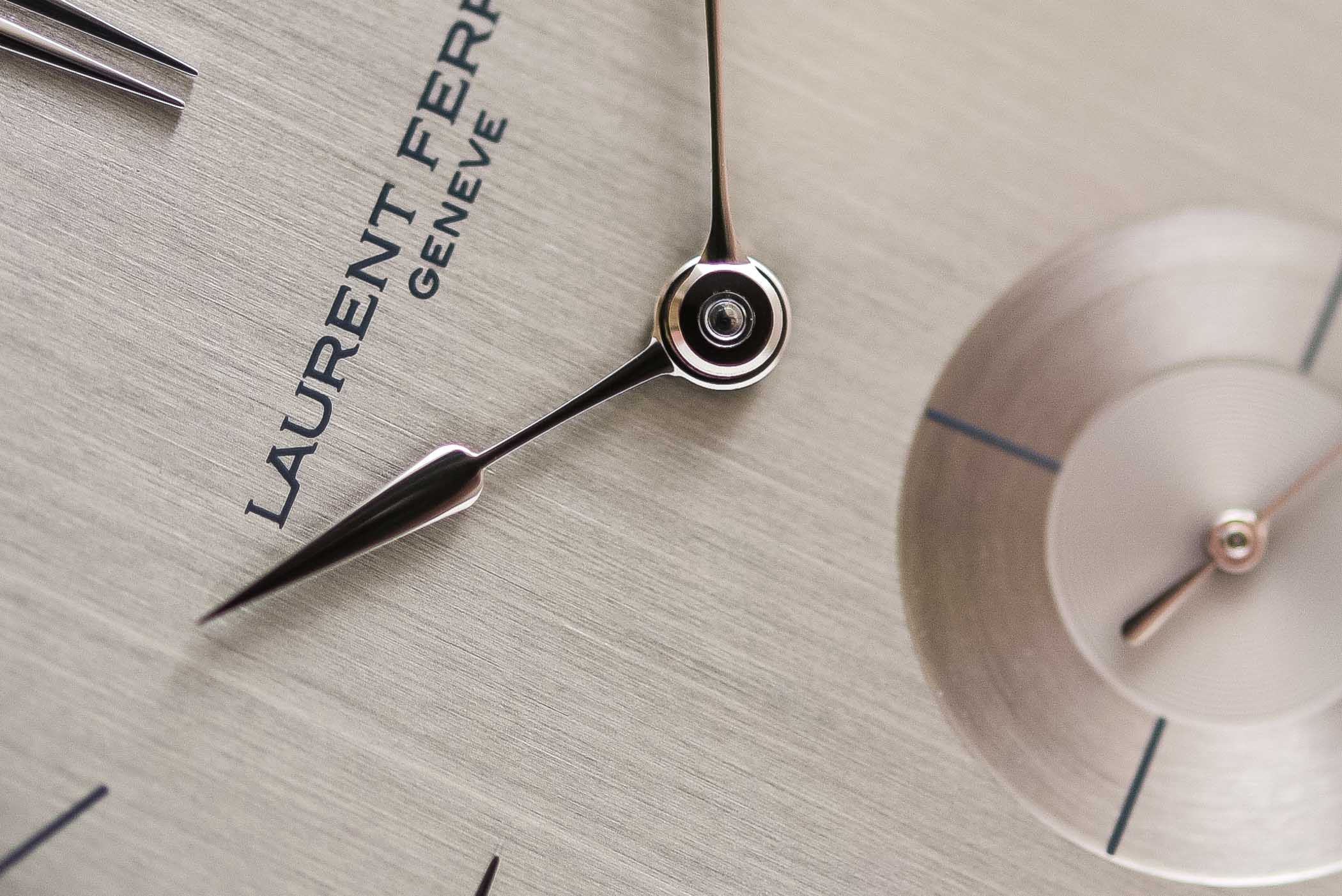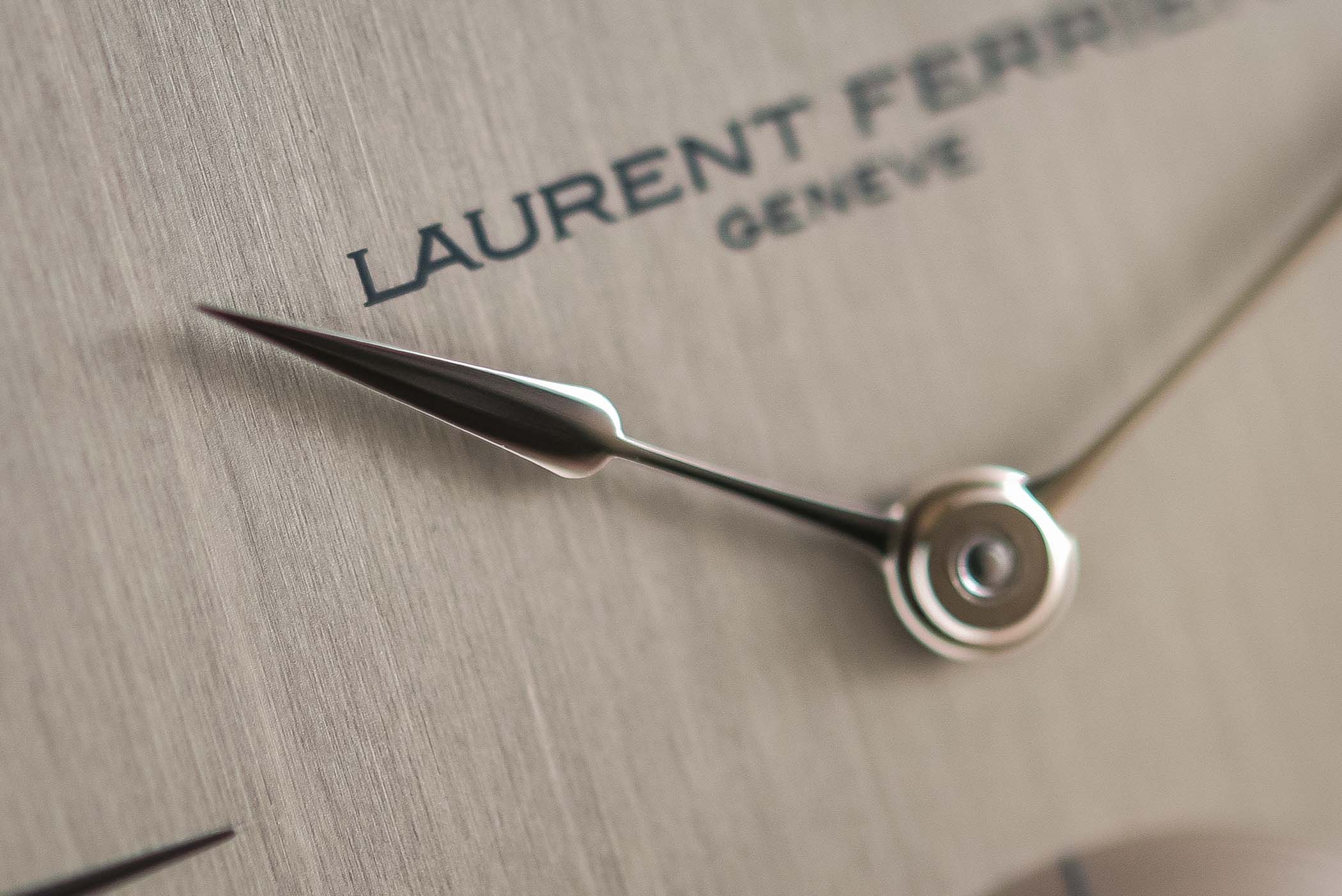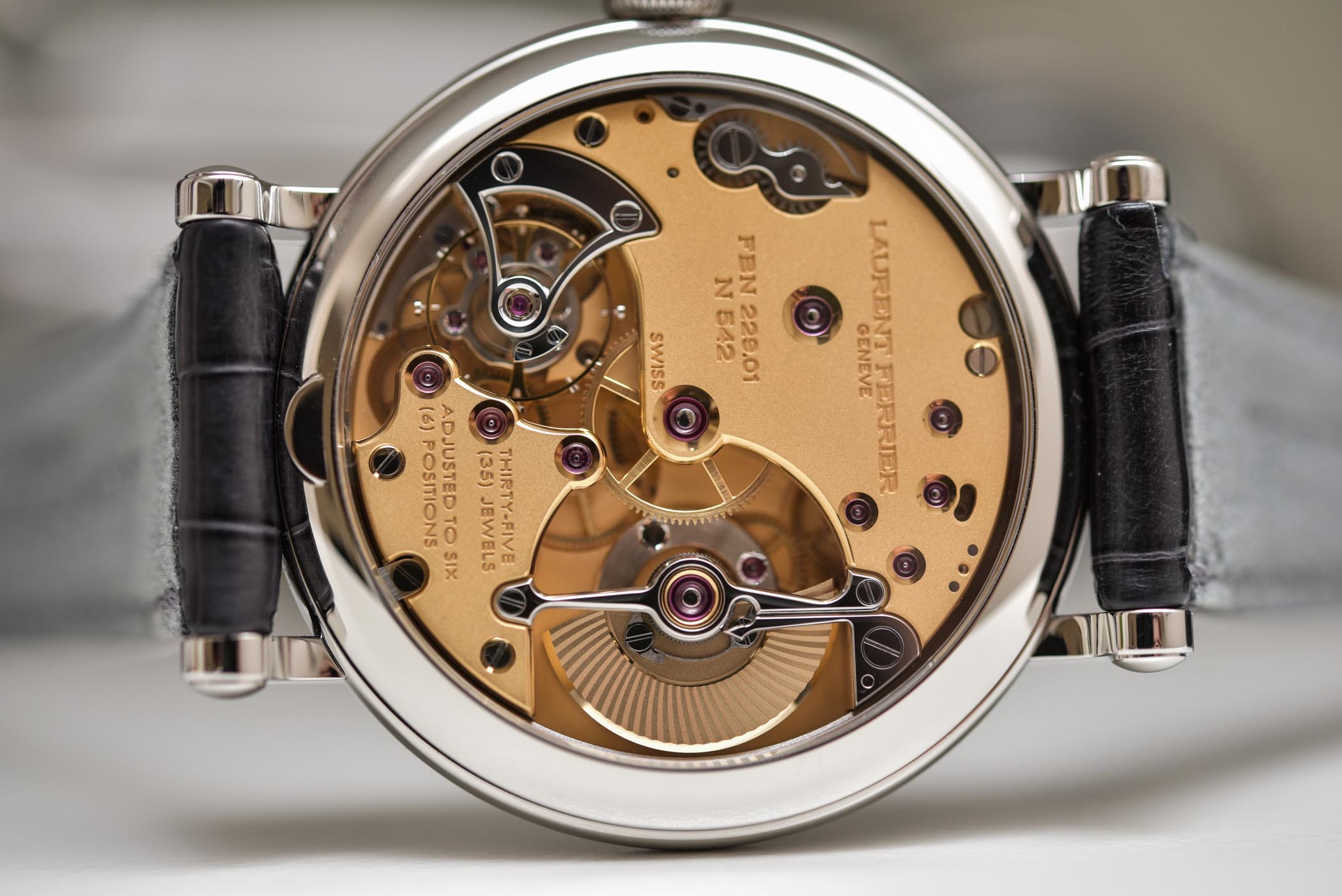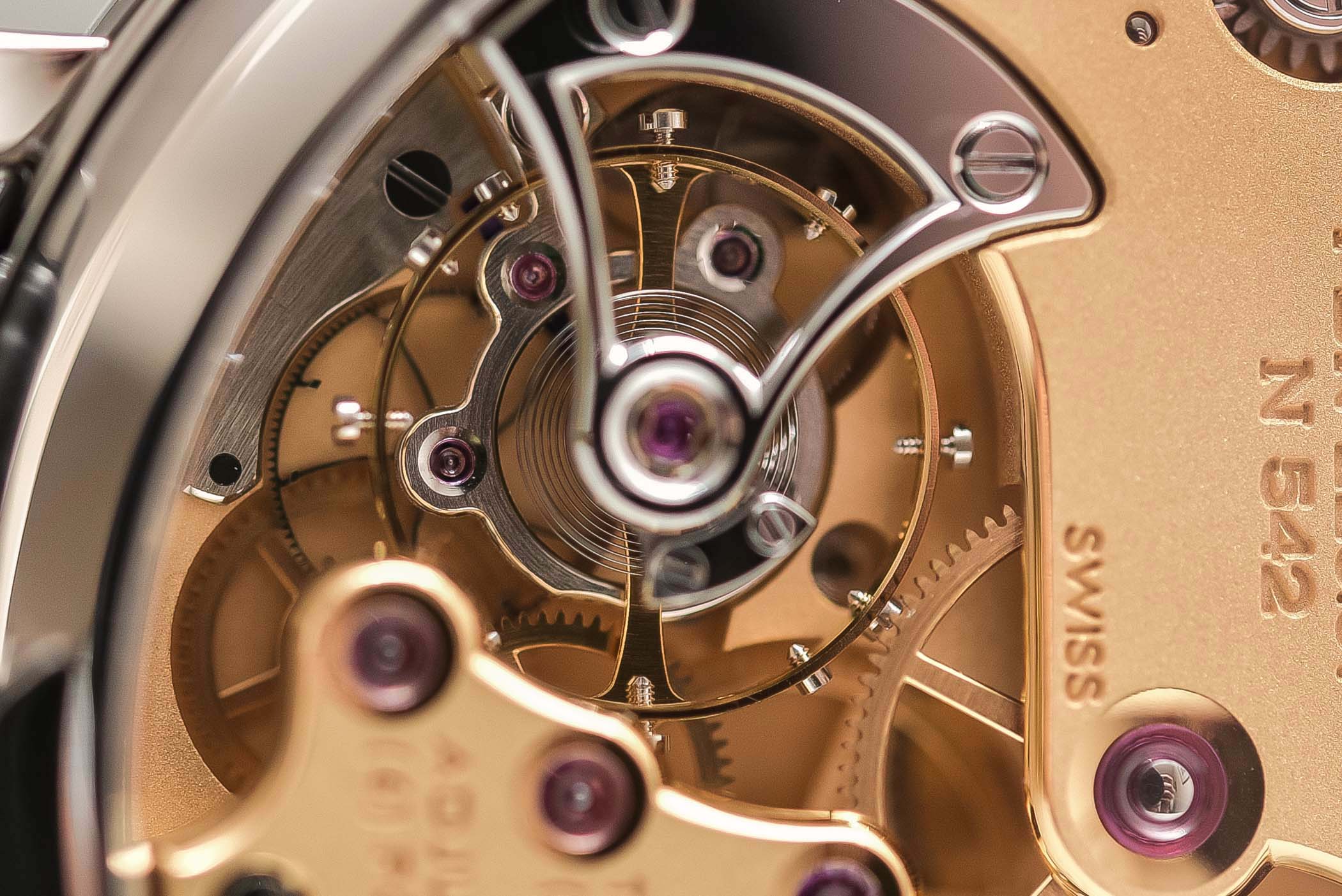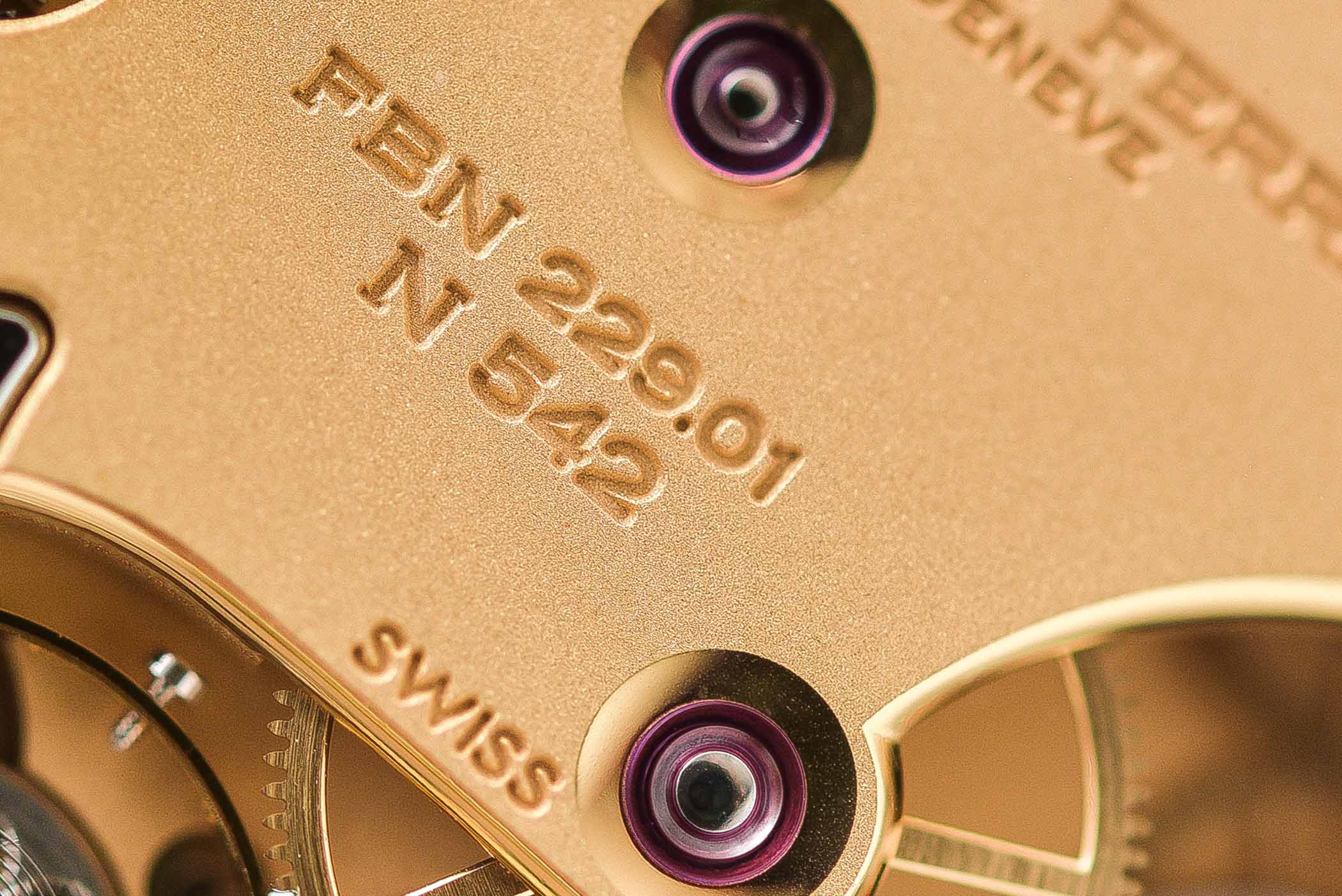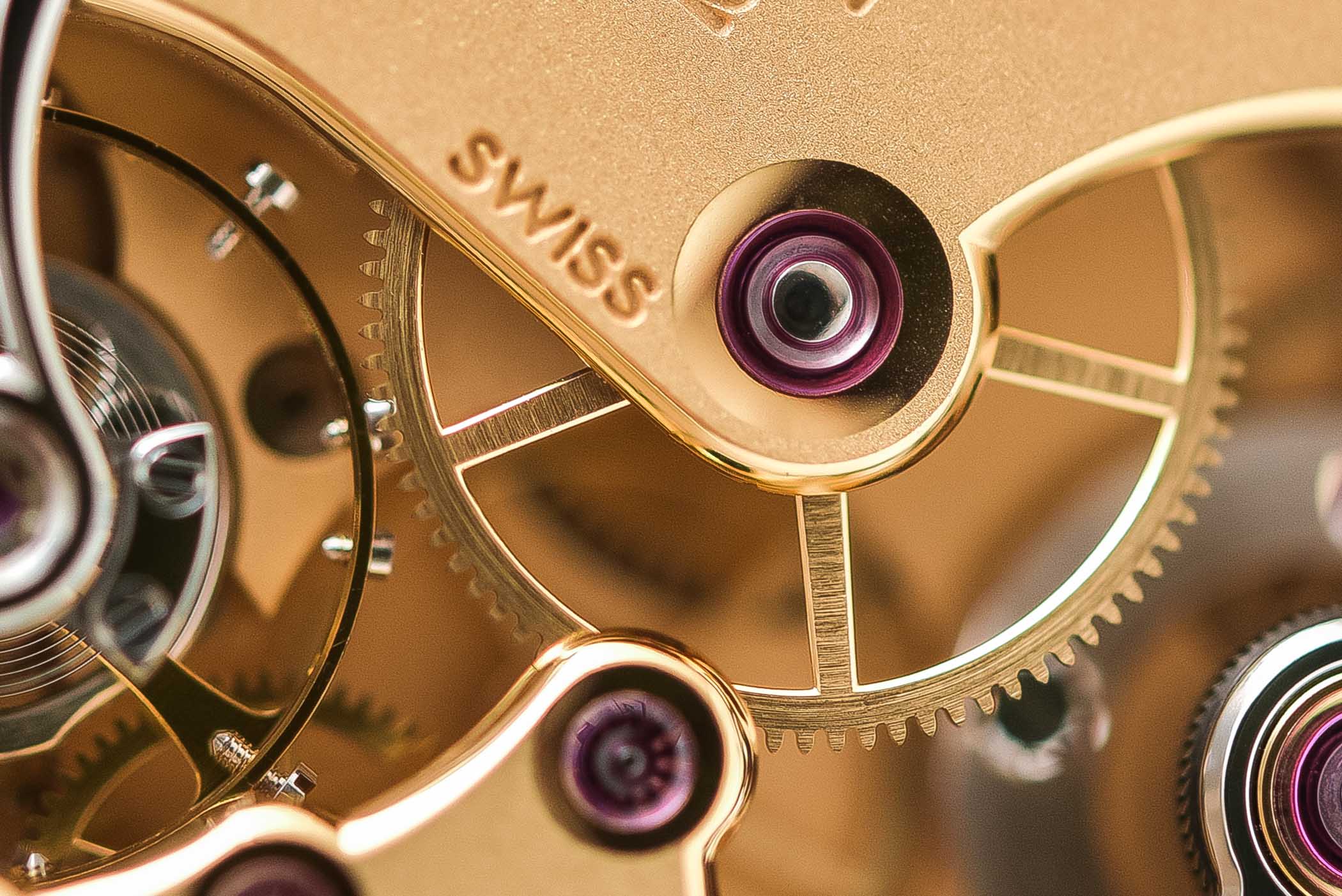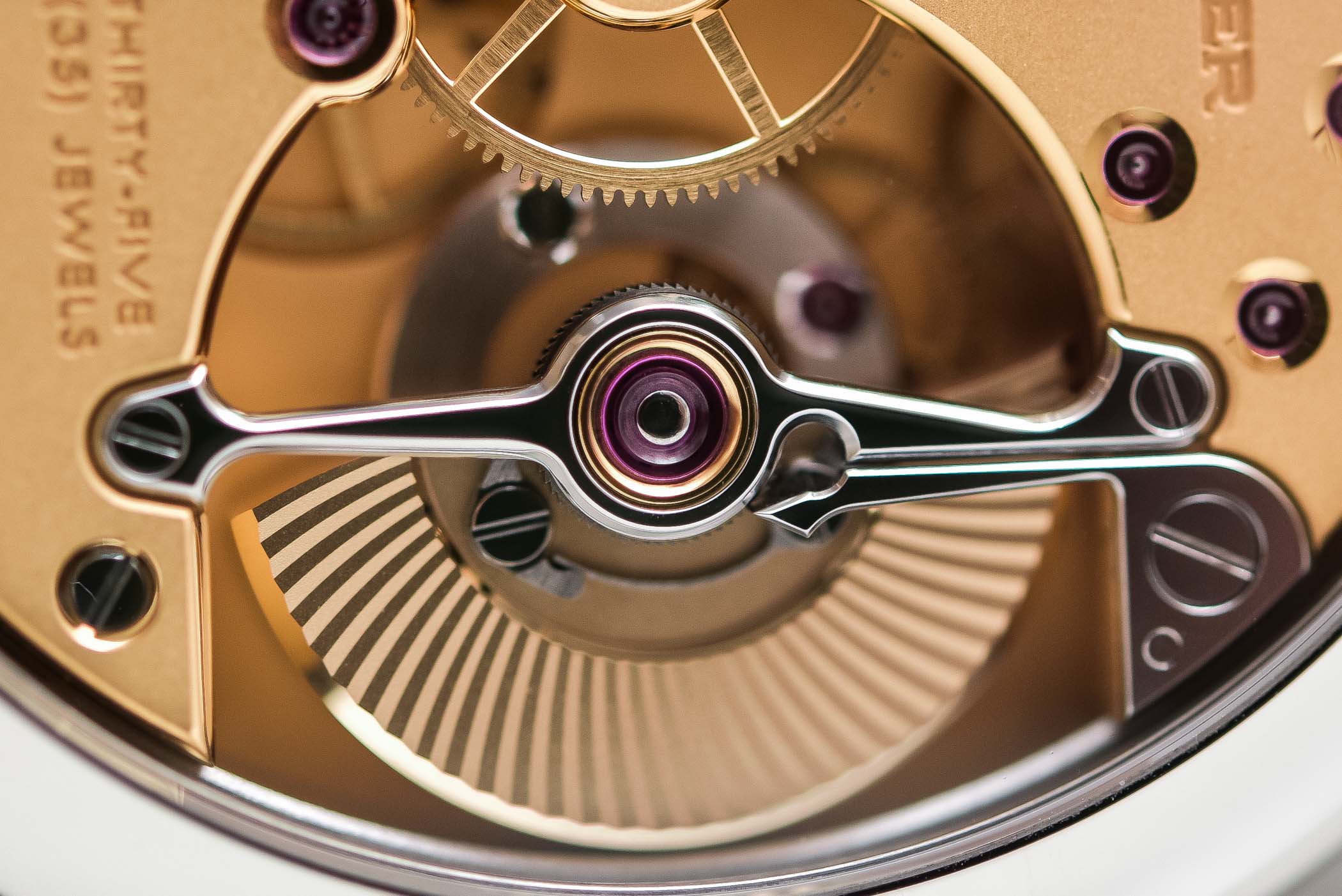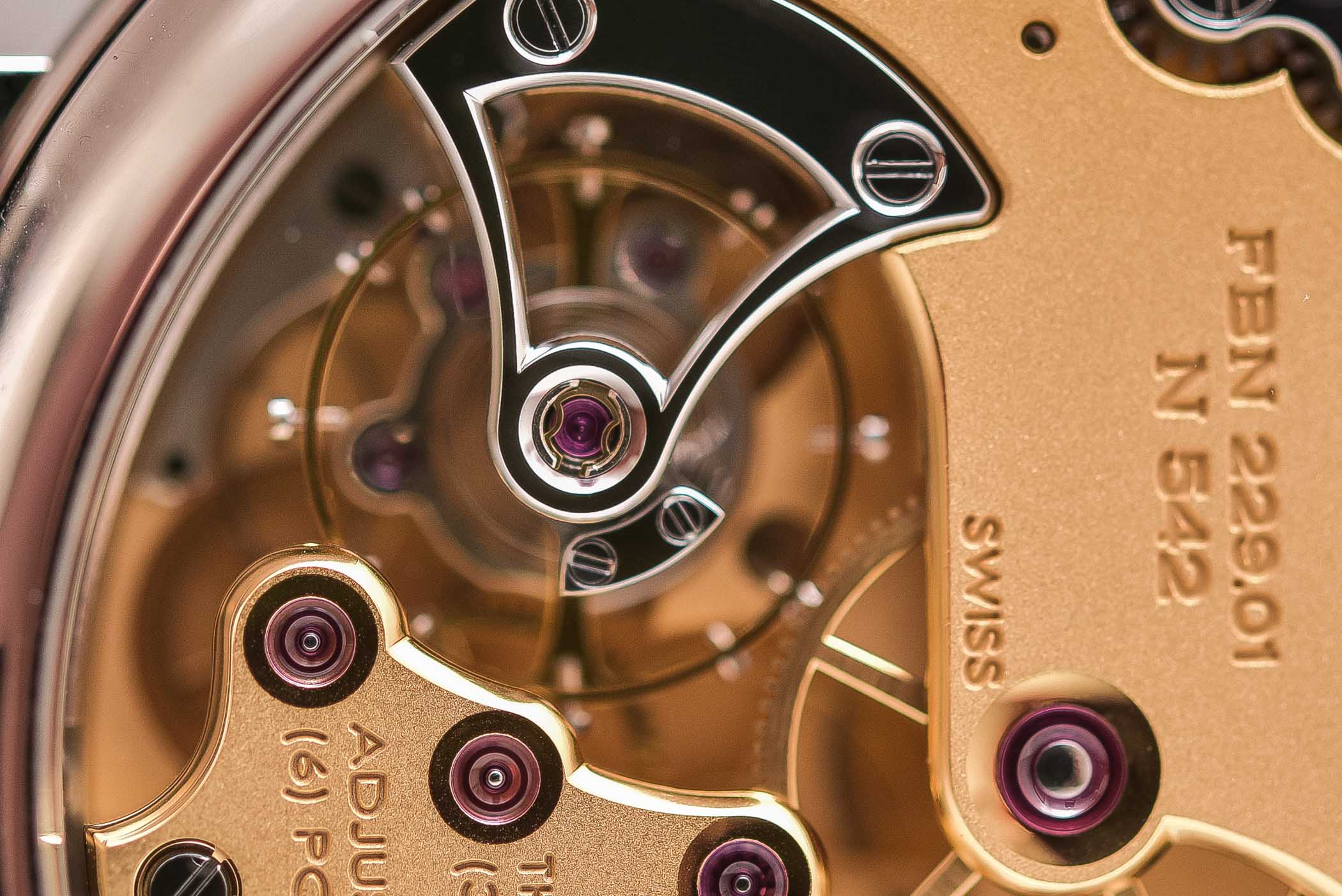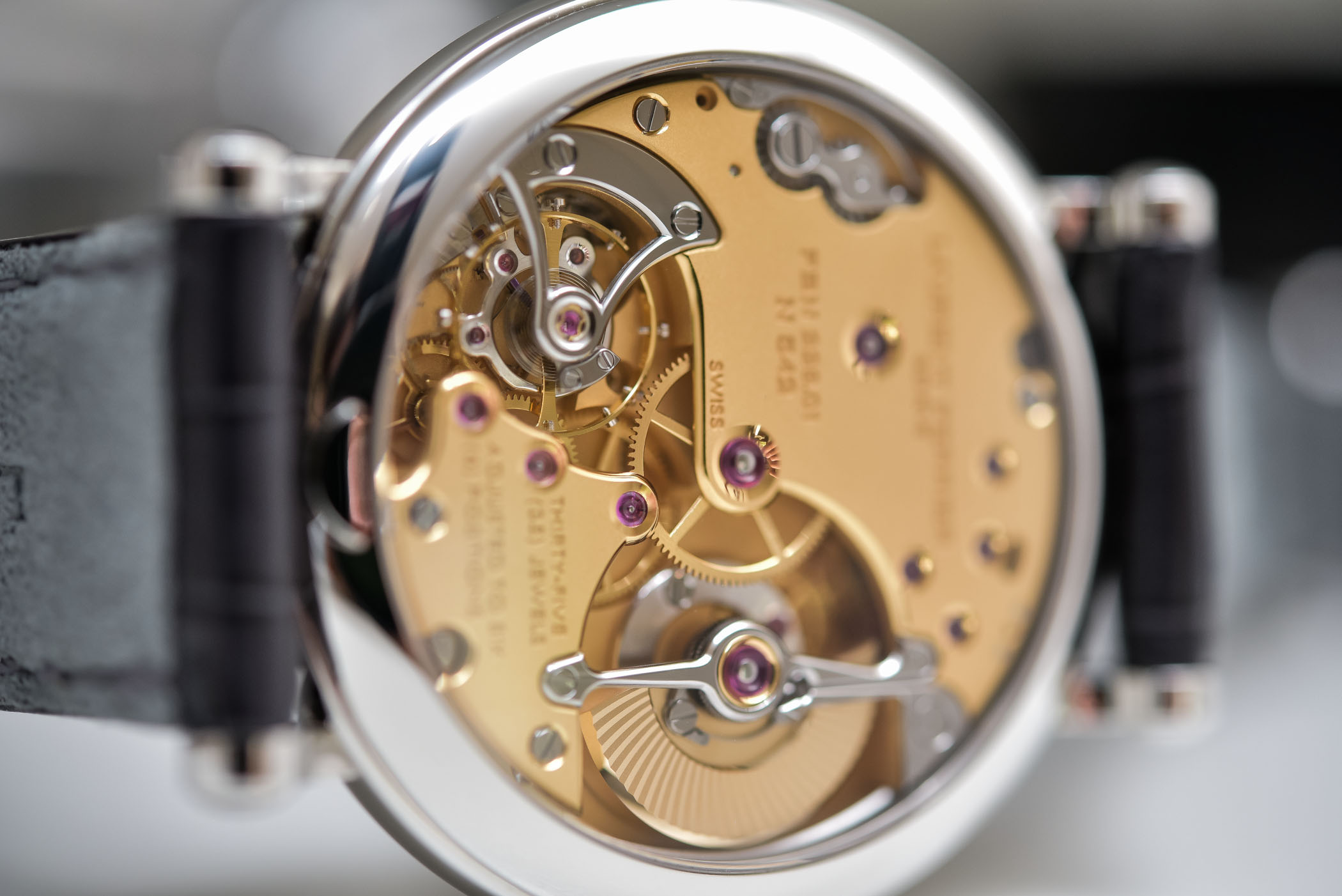Review – Dissecting the Laurent Ferrier Montre Ecole in Steel to Understand the Meaning of Haute-Horlogerie
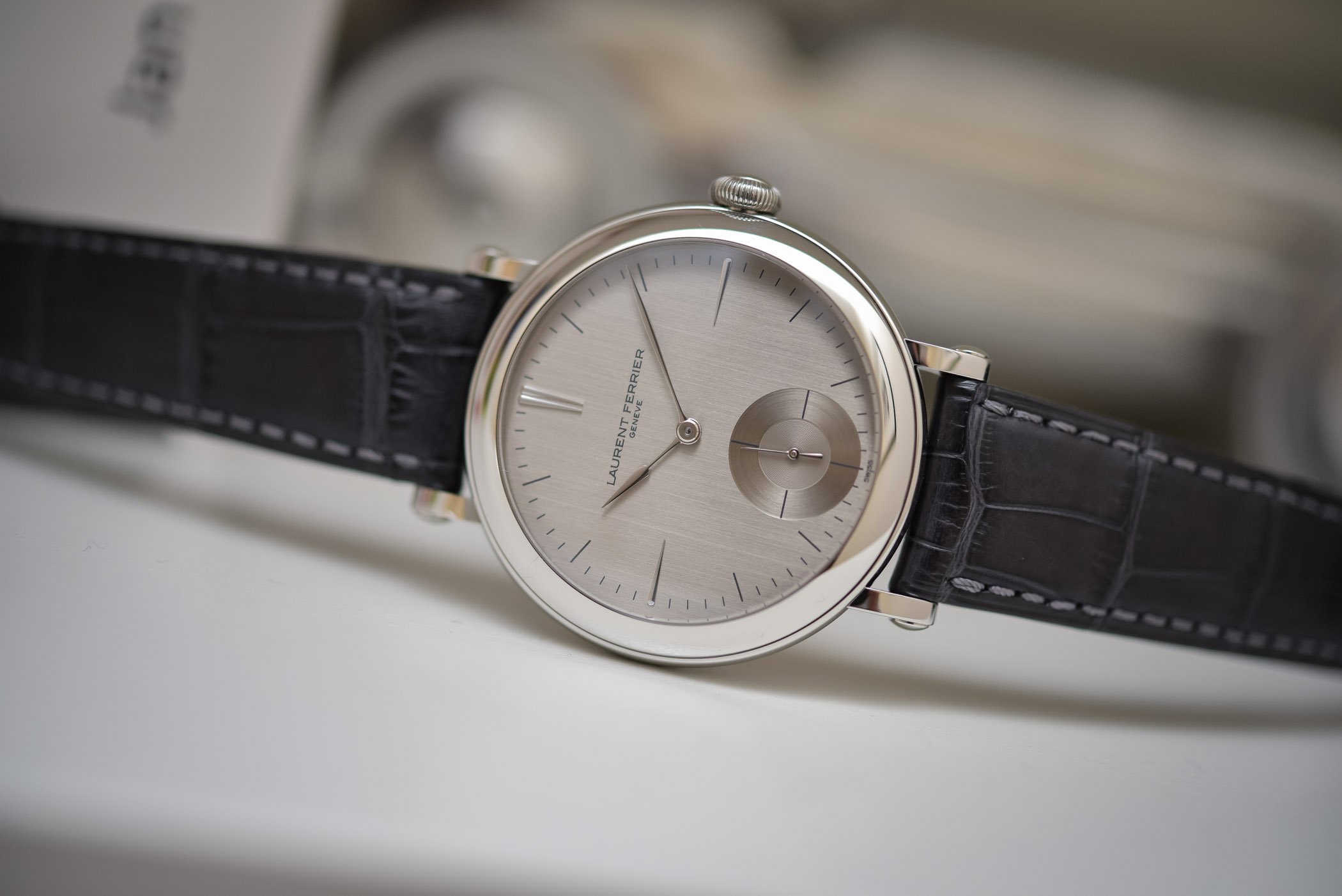
This article first started its life as a classical review, as we like to do here, on Monochrome. However, as I was drawing it in my mind, I quickly understood that the Laurent Ferrier Montre Ecole was a perfect piece to do something slightly different, to write an article with a different structure. In fact, we often have questions about how high-end watches can cost such incredibly high prices. Well, today, by properly dissecting this Montre Ecole, I’ll aim to explain why a 3-hand watch in stainless steel can be priced CHF 35,000 – and we’ll discover that it’s all about the smallest details…
A Quick Look at the Laurent Ferrier Montre Ecole
It has to be kept in mind that Mr Laurent Ferrier is, first of all, a watch passionate. He has spent his entire career focusing on created timepieces – he was the creative director of Patek Philippe, a company for whom he worked for 37 years. When he created his own brand, he tried to accentuate this passion in his watches, with several ideas: a simple, refined and extremely clean design, slightly vintage-inspired and with pocket watches elements, in a proper Haute-Horlogerie concept, with superbly finished and decorated movements, all with innovative technical features.
Today’s Laurent Ferrier Galet Micro-Rotor “Montre Ecole” is, in its shape and design, a strong tribute to Ferrier’s school years and to the pioneering watchmakers who converted pocket watches into wristwatches. The result can be seen with a case which is different from the 2 others watches already present in the collection: the Galet and the Galet Square. The Montre Ecole is pure round, with lugs that seem as if they’re added to the case, just like converted pocket watches. There’s a strong vintage appeal in this watch, although not from the usual 1950s or 1960s watches, but clearly from the early days of the wristwatches. It is available in 3 versions: stainless steel, white gold and red gold.
Inside the case is Laurent Ferrier’s signature movement, a micro-rotor engine, with its silicon escapement’s double direct-impulse on the balance and with pawl-fitted micro-rotor, and fully wound storing 72 hours of power reserve. While the gold versions feature a classically decorated movement (Geneva stripes and rhodium plated bridges), the steel version of the Laurent Ferrier Montre Ecole is slightly different. The choice was made to have a (slightly) rougher decoration, recalling the original materials used for prototyping, such as brass, which offers a contrast with steel. Further hand-finishing skills applied to the movement include shot-blasting, known as microbillé, which gives it this matte, almost unfinished look.
On the wrist, well, we have an extremely elegant watch, which feels both modern (thanks to the 40mm diameter), well proportioned (a nice balance between the diameter and the thickness, at 10.95mm) and such overall discretion that you’ll only recognise its significance if you have a strong knowledge in watches – and clearly, this is true elegance. As always with LF watches, the comfort on the wrist is great, as the entire case is rounded and doesn’t have a single sharp edge – it’s the kind of watch that you strap on and could forget after 5 minutes, if there wasn’t this superb design.
However, all of this is not the point of this article. As said, the Laurent Ferrier Montre Ecole in Steel is priced at CHF 35,000 / Euro 33,000. Quite a steep price for a 3-hand watch in a commoner metal… This is the exact reason why such watches need to be explained, to be discovered, to be explored with a loupe, in order to reveal their beauty and the handwork done in the smallest details of their case, their dial, their hands or their movement. Here, you’ll see what traditional Haute-Horlogerie means.
The Case
We’re going to do this crescendo, moving from large to small details. First, the case. At first, the case of the Laurent Ferrier Montre Ecole (whatever the version, they all share the exact same design and finishing) is extremely simple. It feels like an all-round piece, in 3 parts: bezel, central container and caseback. In fact, it is a bit more complex than that. While the Galet and Galet Square have an almost seamless integration of the bezel and the central container, the Montre Ecole has a so-called bassiné case (this shape refers to antique pocket watches that adopted a round, ovoid shape when looked at from the side, without a single flat surface, in order not snag the interior of the pockets), with sharper defining lines between the parts, and lugs that are not crafted in continuity with the casebands.
When looked at from the side, we can see that there’s a small, vertical dividing line surrounding the bezel and the caseback, to animate the overall very ovoid shape of this watch – every surface is otherwise convex, giving this smooth style to the watch. This tiny dividing line, almost invisible at first, is also finished differently, with a circular brushing, and not polished like the rest of the case.
Also, the lugs of the Montre Ecole are now straight and thin, and mainly they are not actually integrated into the caseband. Instead, they show a clear demarcation with the rest of the case, as if they were added later, just like early wristwatches, which mainly were converted pocket watches. This detail, as stupid as it seems, requires, in fact, more attention when polishing the case, in order not to break the angles.
Finally, there are the “pastilles” on the tip of the lugs – some will know them as “cabochons” – which give echo to the winding crown. Finally, there’s the caseback, with a sapphire crystal. Nothing original you’ll tell me, however there is one small detail; the domed profile of this sapphire crystal which makes a world of difference when wearing the watch. It feels smooth and pleasant on the skin. I know it has nothing to do with Haute-Horlogerie, but it shows a great consideration to comfort.
The Dial and Hands
Let’s now move a little deeper into this watch, by now looking at some details of the dial, the hands and the indexes. Don’t be fooled by the clean and restrained look of this Laurent Ferrier Montre Ecole, it has a lot to display.
- The dial
As mentioned earlier, this watch is all about simplicity. It has a minimalist approach to the design that focuses on the essential, on the quality of the execution, on the noble materials and on the details (some almost impossible to notice without a loupe or macro-shots), rather than expressing luxury by being ostentatious. The dial of the Montre Ecole, especially the steel version, is indeed minimalist. It shows one unique finishing, a straight, vertical brushing, on the entire surface – except the sub-dial for the running second of course.
Yet, this dial is more lively in the metal than it feels at first. It has to be experienced in natural light to see how it can change colour, from a cold, blue-ish silver tone, to pink, yellow or green reflection depending on the ambient light. In certain conditions, such as the image you can see above, it is warm, smooth and darker. In other circumstances, like on the photo below, it becomes much more metallic and the brushed surface appears rougher.
As for the sub-dial at 6, it has a combination of concentric pattern in the centre and circular brushing on the periphery. Nothing extraordinary but a very precise execution again. Observed closer, the dial reveals its details. First, the brushed surface and the printings (see below). The brushing applied on the dial is very finely executed and can be almost invisible in certain conditions. However, this is what gives the Montre Ecole such changing reflections. Then, there is the literature on the text, which is very precisely printed.
As simple as it feels at first, this dial is indeed pleasant and combines a great discretion when seen on the wrist of its wearer, yet it reveals well-executed details when observed with a loupe.
- The “assegai-shaped” hands and the indexes
On all his creations, Laurent Ferrier uses its signature hands, so-called “assegai-shaped” (at least for the hour hand, the minute hand is a classical leaf-shaped one). This name refers to an ancient type of weapon, close to a modern javelin. Apart from their shape, it’s more the execution of these hands that impresses. They are crafted in 18k white gold and carefully shaped and polished.
A closer look reveals a flawless polishing. Even the centre part of the hands named the “canon” is superbly chamfered and polished. The final trick comes from their shape, as these hands are not flat but domed, meaning that they can only be polished by hand…
The same attention to detail can be seen on the indexes. Again, although quite simple in appearance, they also require patience and trained hands to be crafted, shaped and polished. The beauty of this watch is not in being demonstrative, in revealing too quickly what it is… It has some finesse, some delicacy, that will be seen only after spending some time with it… An intimate pleasure, reserved to its wearer.
The Finishing of the Movement
- The technical solutions
Let’s now move to the other side of this Laurent Ferrier Montre Ecole and explore the movement… because clearly, this is where the price entirely becomes justified. First of all, this 3-hand movement is not any kind of automatic movement. It is based on a specific architecture and uses innovative solutions. The first is the use of a micro-rotor, in lieu of the usual central rotor. This micro-rotor, with a nice sun-ray pattern, uses a unidirectional pawl-fitted winding system. While not new in watchmaking, this architecture remains more complex to create than a traditional automatic movement.
Then, there’s the unique silicon escapement featuring a double direct-impulse on the balance. The regulating organ features not one but two escape wheels (one is visible in the photo above in dark blue, under the balance wheel). This means that this escapement can give two impulses per oscillation (1 oscillation = 2 vibrations), twice as much as a normal lever escapement. Thus, the movement’s frequency of 3Hz (21,600vph) allows impulsing the balance 21,600 times per hour. This innovative construction, combined with the use of cutting-edge materials, maximises energy efficiency, thereby guaranteeing a high amplitude of the balance. This, in turn, reduces the amount of mechanical force required to wind the mainspring and optimises winding.
- The finishing of the main-plate and bridges
As you can see on the images, the movement of the Steel Laurent Ferrier Montre Ecole is quite different from the usual “Swiss-made” movement. No Geneva stripes here, no rhodium-plated bridges. Instead, Laurent Ferrier chose to use a visually rough decoration, named microbillé or shot-blasted. This matte, almost frosted surface is obtained by spraying some small balls of glass or sand on the surface. Yet, what is tricky here is that this operation must be applied before the movement is finished… meaning that when the watchmakers are polishing the sinks of the chamfers, they have to take great care not to scratch the shot-blasted surface.
- Anglages, beveling, chamfering, black-polishing… Decoration 101
Let’s now move to macro… and take a look at these small details that only watch lovers will recognize. The first one being the anglages applied on the edges of the bridges. See below:
The photo above is a perfect demonstration of the difference between industrially produced movements and hand-decorated ones. A classic in movement decoration is to chamfer the bridges, by applying a bevel on the edges of the bridges, with an equal angle (in general 45°) and width. On luxury watches, this is done with a diamond tool that shapes and polishes the surface. Here, you can easily see that the anglage is done manually, first because of the internal angles (sharp, acute angle visible on the right side of the jewel) that no machine can polish. Then, there’s the actual shape of this bevel, which has a rounded surface – a traditional decoration technique that requires incredible skills and a lot of patience. Only a handful of watchmakers still do it in modern watches (think Dufour, Voutilaiinen, Gauthier…)
That same photo also reveals 2 other details: the chamfered wheels – again only possible by hand – with a circular-brushed surface, and the polished sinks – a concave chamfer around the jewels is carved and then polished. That being said, if you look at the photo above, do take into account that it has been zoomed approximately 30 times compared to the real size of this sink… And we’ve seen only a few movements that show such flawless polished surfaces.
Another feast for connoisseurs are the steel parts which contrast well with the raw brass surfaces of the bridges. Again, they have been decorated in the best possible way. As you can see on the images, they show a so-called black polishing. Black-polishing is used to acquire a perfectly smooth surface of the steel parts, which in return reflect the light like a mirror or appear black when gazed from a certain angle. Such polishing requires a perfectly flat surface, with not a single irregularity or rounded angle on the part in question (the edges of the part must be perfectly flat too) and light reflections must be in one single direction, otherwise the “black effect” won’t appear. This technique is time-consuming (think several hours for a single bridge) and requires talented hands to obtain a perfectly flat and flawless surface.
These steel parts also reveal impressive anglage work… The technique is the same as the one described for the bridges, yet the scale is even smaller, as the part on which the watchmaker works is smaller too. Well, just look at the precision and the sharpness of the internal angles on the cock-bridge (the bridge that holds the balance-wheel) of the Laurent Ferrier Montre Ecole… Sometimes images are better than words.
Conclusion
After this exposé, it’s probably not necessary anymore to say how beautifully executed this watch is. The photos talk for themselves. This Laurent Ferrier Montre Ecole, like all other watches from the brand, is indeed impressively detailed. Now, this case-study might open the eyes of some that still hardly understand how a 3-hand watch in steel can be priced at CHF 35,000. If this same watch, with the same technical solutions and overall shape, would have hands obtained by a stamping process and a movement decorated by the mean of machines, it would certainly cost half of this price – or maybe even less. However, the difference between this watch and a watch from a mainstream brand is in manufacturing time… Labour time used by watchmakers and finisseurs to obtain such a level of details.
More details on laurentferrier.ch.


